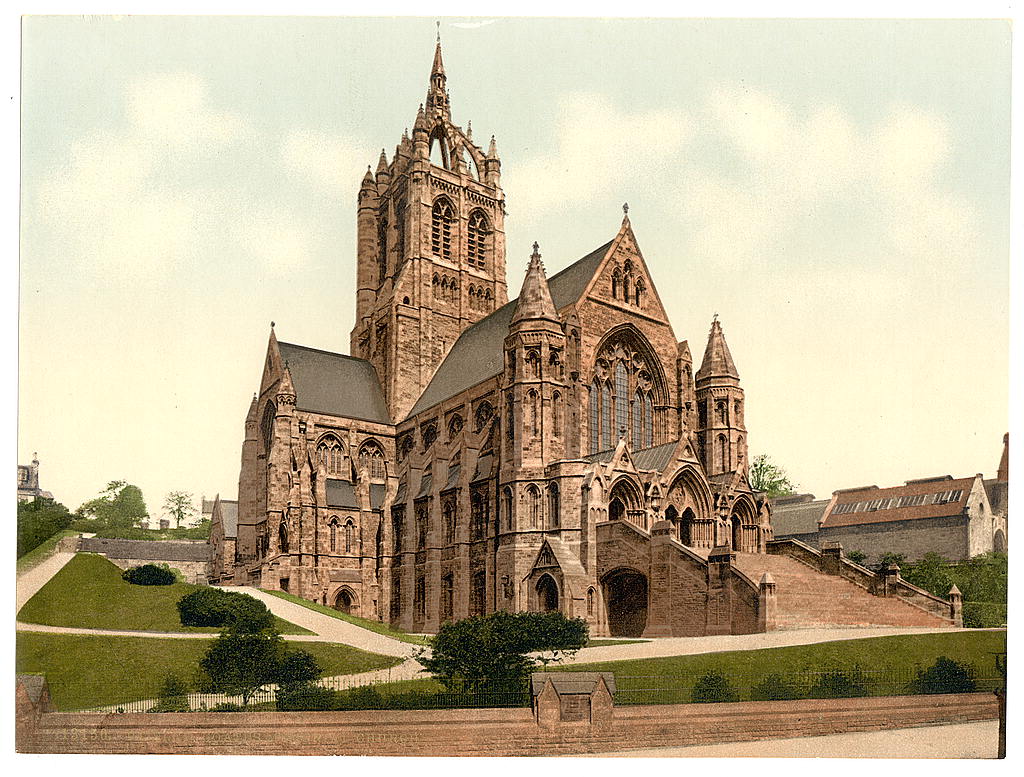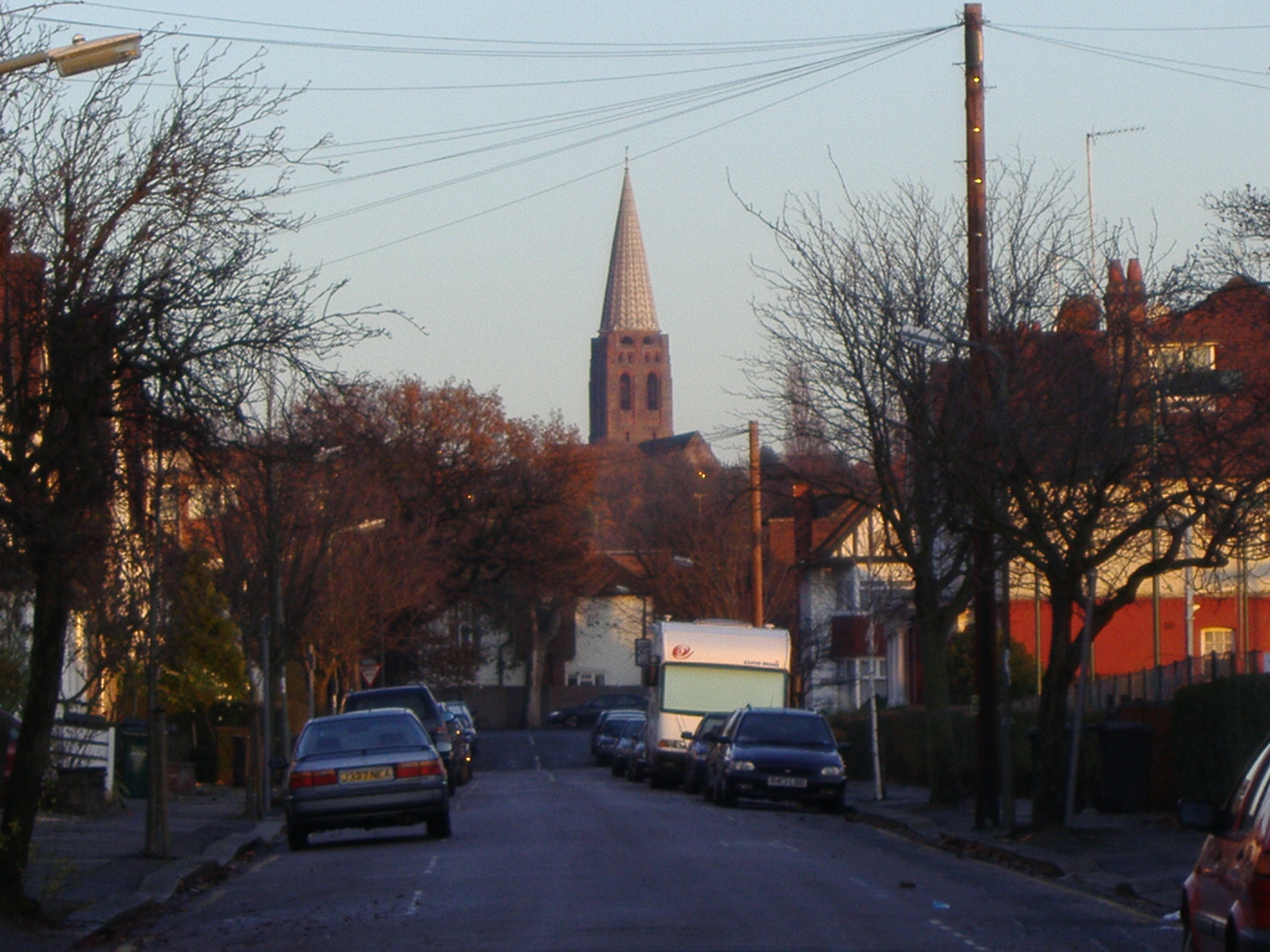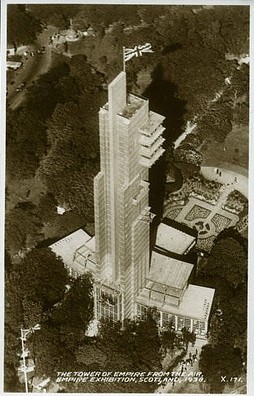|
Thomas Smith Tait
Thomas Smith Tait (18 June 1882 – 18 July 1954) was a Scottish modernist architect. He designed a number of buildings around the world in Art Deco and Streamline Moderne styles, notably St. Andrew's House (the headquarters of the Scottish Government) on Calton Hill, Edinburgh, and the pylons for Sydney Harbour Bridge. Biography Born in 1882 in Paisley, the son of a master stonemason, he was educated at the John Neilson Institution, following which he entered apprenticeship as an architect with James Donald in Paisley. Tait went on to Glasgow School of Art where he studied under the Beaux Arts teacher Eugene Bourdon. He travelled extensively in Europe between 1904 and 1905, before settling in London where he joined the prestigious architectural practice of Sir John James Burnet. In 1910 he married Constance Hardy, the daughter of a London stationmaster, and they set up home at 26 Holyoake Walk in Ealing. Together they had three sons; the eldest, Gordon, born in 1912, la ... [...More Info...] [...Related Items...] OR: [Wikipedia] [Google] [Baidu] |
Paisley, Renfrewshire
Paisley ( ; sco, Paisley, gd, Pàislig ) is a large town situated in the west central Lowlands of Scotland. Located north of the Gleniffer Braes, the town borders the city of Glasgow to the east, and straddles the banks of the White Cart Water, a tributary of the River Clyde. Paisley serves as the administrative centre for the Renfrewshire council area, and is the largest town in the historic county of the same name. It is often cited as "Scotland's largest town" and is the fifth largest settlement in the country, although it does not have city status. The town became prominent in the 12th century, with the establishment of Paisley Abbey, an important religious hub which formerly had control over other local churches. By the 19th century, Paisley was a centre of the weaving industry, giving its name to the Paisley shawl and the Paisley pattern. The town's associations with political radicalism were highlighted by its involvement in the Radical War of 1820, with striking ... [...More Info...] [...Related Items...] OR: [Wikipedia] [Google] [Baidu] |
John James Burnet
Sir John James Burnet (31 May 1857 – 2 July 1938) was a Scotland, Scottish Edwardian architecture, Edwardian architect who was noted for a number of prominent buildings in Glasgow and London. He was the son of the architect John Burnet (architect), John Burnet, and later went into partnership with his father, joining an architectural firm which would become an influential force in British Modern architecture in the 20th century. Biography John James Burnet was born in Blythswood Hill, Glasgow, on 31 May 1857. He was the youngest of the three sons of the architect John Burnet (architect), John Burnet and his wife, Elizabeth Hay Bennet. They were a Congregational church, Congregationalist family. John James was educated in Glasgow at the original Collegiate School, at the Western Academy, and at Blairlodge School, Polmont. Study in Paris He trained for two years in his father's architectural offices. His parents intended him to study at the Royal Academy Schools under Richard ... [...More Info...] [...Related Items...] OR: [Wikipedia] [Google] [Baidu] |
United Kingdom
The United Kingdom of Great Britain and Northern Ireland, commonly known as the United Kingdom (UK) or Britain, is a country in Europe, off the north-western coast of the continental mainland. It comprises England, Scotland, Wales and Northern Ireland. The United Kingdom includes the island of Great Britain, the north-eastern part of the island of Ireland, and many smaller islands within the British Isles. Northern Ireland shares a land border with the Republic of Ireland; otherwise, the United Kingdom is surrounded by the Atlantic Ocean, the North Sea, the English Channel, the Celtic Sea and the Irish Sea. The total area of the United Kingdom is , with an estimated 2020 population of more than 67 million people. The United Kingdom has evolved from a series of annexations, unions and separations of constituent countries over several hundred years. The Treaty of Union between the Kingdom of England (which included Wales, annexed in 1542) and the Kingdom of Scotland in 170 ... [...More Info...] [...Related Items...] OR: [Wikipedia] [Google] [Baidu] |
Modern Architecture
Modern architecture, or modernist architecture, was an architectural movement or architectural style based upon new and innovative technologies of construction, particularly the use of glass, steel, and reinforced concrete; the idea that form should follow function ( functionalism); an embrace of minimalism; and a rejection of ornament. It emerged in the first half of the 20th century and became dominant after World War II until the 1980s, when it was gradually replaced as the principal style for institutional and corporate buildings by postmodern architecture. Origins File:Crystal Palace.PNG, The Crystal Palace (1851) was one of the first buildings to have cast plate glass windows supported by a cast-iron frame File:Maison François Coignet 2.jpg, The first house built of reinforced concrete, designed by François Coignet (1853) in Saint-Denis near Paris File:Home Insurance Building.JPG, The Home Insurance Building in Chicago, by William Le Baron Jenney (1884) File:Const ... [...More Info...] [...Related Items...] OR: [Wikipedia] [Google] [Baidu] |
Kodak Building, London
The Eastman Kodak Company (referred to simply as Kodak ) is an American public company that produces various products related to its historic basis in analogue photography. The company is headquartered in Rochester, New York, and is incorporated in New Jersey. Kodak provides packaging, functional printing, graphic communications, and professional services for businesses around the world. Its main business segments are Print Systems, Enterprise Inkjet Systems, Micro 3D Printing and Packaging, Software and Solutions, and Consumer and Film. It is best known for photographic film products. Kodak was founded by George Eastman and Henry A. Strong on May 23, 1892. During most of the 20th century, Kodak held a dominant position in photographic film. The company's ubiquity was such that its " Kodak moment" tagline entered the common lexicon to describe a personal event that deserved to be recorded for posterity. Kodak began to struggle financially in the late 1990s, as a result of the ... [...More Info...] [...Related Items...] OR: [Wikipedia] [Google] [Baidu] |
British Museum
The British Museum is a public museum dedicated to human history, art and culture located in the Bloomsbury area of London. Its permanent collection of eight million works is among the largest and most comprehensive in existence. It documents the story of human culture from its beginnings to the present.Among the national museums in London, sculpture and decorative and applied art are in the Victoria and Albert Museum; the British Museum houses earlier art, non-Western art, prints and drawings. The National Gallery holds the national collection of Western European art to about 1900, while art of the 20th century on is at Tate Modern. Tate Britain holds British Art from 1500 onwards. Books, manuscripts and many works on paper are in the British Library. There are significant overlaps between the coverage of the various collections. The British Museum was the first public national museum to cover all fields of knowledge. The museum was established in 1753, largely b ... [...More Info...] [...Related Items...] OR: [Wikipedia] [Google] [Baidu] |
English Heritage
English Heritage (officially the English Heritage Trust) is a charity that manages over 400 historic monuments, buildings and places. These include prehistoric sites, medieval castles, Roman forts and country houses. The charity states that it uses these properties to "bring the story of England to life for over 10 million people each year". Within its portfolio are Stonehenge, Dover Castle, Tintagel Castle and the best preserved parts of Hadrian's Wall. English Heritage also manages the London Blue Plaque scheme, which links influential historical figures to particular buildings. When originally formed in 1983, English Heritage was the operating name of an executive non-departmental public body of the British Government, officially titled the Historic Buildings and Monuments Commission for England, that ran the national system of heritage protection and managed a range of historic properties. It was created to combine the roles of existing bodies that had emerged from a long ... [...More Info...] [...Related Items...] OR: [Wikipedia] [Google] [Baidu] |
Blue Plaque
A blue plaque is a permanent sign installed in a public place in the United Kingdom and elsewhere to commemorate a link between that location and a famous person, event, or former building on the site, serving as a historical marker. The term is used in the United Kingdom in two different senses. It may be used narrowly and specifically to refer to the "official" scheme administered by English Heritage, and currently restricted to sites within Greater London; or it may be used less formally to encompass a number of similar schemes administered by organisations throughout the UK. The plaques erected are made in a variety of designs, shapes, materials and colours: some are blue, others are not. However, the term "blue plaque" is often used informally to encompass all such schemes. The "official" scheme traces its origins to that launched in 1866 in London, on the initiative of the politician William Ewart, to mark the homes and workplaces of famous people. It has been administe ... [...More Info...] [...Related Items...] OR: [Wikipedia] [Google] [Baidu] |
Hampstead Garden Suburb
Hampstead Garden Suburb is an elevated suburb of London, north of Hampstead, west of Highgate and east of Golders Green. It is known for its intellectual, liberal, artistic, musical and literary associations. It is an example of early twentieth-century domestic architecture and town planning in the London Borough of Barnet, northwest London. The master plan was prepared by Richard Barry Parker, Barry Parker and Sir Raymond Unwin. Comprising just over 5,000 properties, and home to around 16,000 people, undivided houses with individual gardens are a key feature. The area enjoys landscaped Squares in London, garden squares, several communal parks and Hampstead Heath Extension. History Hampstead Garden Suburb was founded by Henrietta Barnett, who, with her husband Samuel Augustus Barnett, Samuel, had started the Whitechapel Art Gallery and Toynbee Hall. In 1906, Barnett set up the Hampstead Garden Suburb Trust Ltd, which purchased 243 acres of land from Eton College for the schem ... [...More Info...] [...Related Items...] OR: [Wikipedia] [Google] [Baidu] |
Theodore Fyfe
David Theodore Fyfe (3 November 1875 – 1 January 1945), known simply as Theodore Fyfe, was a Scottish architect. He is widely known as Arthur Evans’s architect during the Knossos (modern history)#Excavation, 1900–1905, first five excavations at the Knossos#Palace complex, Palace of Knossos from 1900 to 1904. Biography Theodore Fyfe was born on 3 November 1875 in the Philippines, second son of James Sloan Fyfe and Jane Charlotte Abercrombie Fyfe. After the deaths of his parents, Fyfe was brought up by his aunt Jane Sloan Fyfe, and uncle John Alexander Fyfe, in Glasgow. He was educated at The Glasgow Academy. In 1890, he became an apprentice of the architect John James Burnet, then Burnet's assistant after completing his apprenticeship. He took classes at the Glasgow School of Art where he was awarded the Haldane Bursary in 1894. He moved to London in 1897 and studied at the Architectural Association School of Architecture, then at the British School at Athens. In 1899� ... [...More Info...] [...Related Items...] OR: [Wikipedia] [Google] [Baidu] |
Glasgow
Glasgow ( ; sco, Glesca or ; gd, Glaschu ) is the most populous city in Scotland and the fourth-most populous city in the United Kingdom, as well as being the 27th largest city by population in Europe. In 2020, it had an estimated population of 635,640. Straddling the border between historic Lanarkshire and Renfrewshire, the city now forms the Glasgow City Council area, one of the 32 council areas of Scotland, and is governed by Glasgow City Council. It is situated on the River Clyde in the country's West Central Lowlands. Glasgow has the largest economy in Scotland and the third-highest GDP per capita of any city in the UK. Glasgow's major cultural institutions – the Burrell Collection, Kelvingrove Art Gallery and Museum, the Royal Conservatoire of Scotland, the Royal Scottish National Orchestra, Scottish Ballet and Scottish Opera – enjoy international reputations. The city was the European Capital of Culture in 1990 and is notable for its architecture, cult ... [...More Info...] [...Related Items...] OR: [Wikipedia] [Google] [Baidu] |
Empire Exhibition, Scotland 1938
Empire Exhibition, Scotland 1938 was an international exposition held at Bellahouston Park in Glasgow, from May to December 1938. The Exhibition offered a chance to showcase and boost the economy of Scotland, and celebrate Empire trade and developments, recovering from the depression of the 1930s. It also marked fifty years since Glasgow's first great exhibition, the International Exhibition (1888) held at Kelvingrove Park. It was the second British Empire Exhibition, the first having been held at Wembley Park, London in 1924 and 1925. Its function was similar to the first National Exhibition in Paris in 1798, and to the first International Exhibition, the Great Exhibition in London in 1851 attended by 6 million visitors. It was declared open by King George VI and Queen Mary on 3 May 1938 at the Opening Ceremony in Ibrox Stadium, attended by 146,000 people. In addition to the Royal Patrons and the Honorary Presidents representing governments and institutions here ... [...More Info...] [...Related Items...] OR: [Wikipedia] [Google] [Baidu] |





.jpg)


